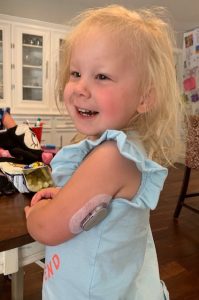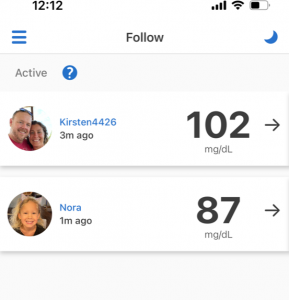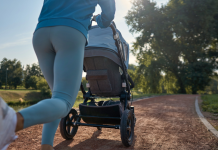November is one of my favorite months of the year. The weather finally starts getting cooler, all the cozy things come out, and there’s my fav holiday – Thanksgiving. November also holds a special place in my heart because it’s Type 1 Diabetes Awareness month. I was diagnosed with T1D at 11 years old and my youngest daughter Nora, now 4, was diagnosed when she was 18 months old.

What Is T1D?
T1D is an autoimmune disease where your body attacks your pancreas so it cannot produce a necessary hormone called insulin. Insulin works like a key. It opens the doors to your cells allowing glucose, or energy, from your food to enter the cell and be used. T1D requires constant monitoring and adjustments of food and insulin to balance blood sugars and avoid long-term complications like kidney failure and blindness.
Technology like insulin pumps and continuous glucose monitors (what I like to call robot parts) has made the daily management of T1D easier over the years but there is still no cure.
My Family’s Diagnosis

Nora was diagnosed with T1D on December 18th, 2018. It was a Monday and she hadn’t been her happy-go-lucky self all weekend. She was getting over a virus and I assumed she was still not feeling 100%. As we were walking to get her big sister from school, I realized she had T1D. When we got home, I checked her blood and her sugars were so high they wouldn’t register on my blood meter. When we got to the hospital, the nurses checked her blood sugars and they were over 600. A person with a working pancreas has blood sugars between 80-120. As she was getting her first shot of insulin, feelings of guilt and anxiety washed over me. How could I have given this disease to my daughter? How will this disease affect her life? Why didn’t I see the signs sooner?
Signs of Type 1 Diabetes
Frequent Urination
Her kidneys were trying to get rid of the excess sugar in her blood, so they were working overtime. Nora had a dry diaper when I put her down for her nap that afternoon and when I woke her up an hour and a half later it was full.
Extreme Thirst
Because her body was getting rid of so much liquid, she was dehydrated and drinking 2-3 8 oz. water bottles in an hour. Her thirst was unquenchable.
Exhaustion and Fatigue
Her cells didn’t have the energy they needed so they weren’t functioning properly. Her body was going into hibernation to conserve energy.
Unexplained Weight Loss and Extreme Hunger
Nora did not experience either of these symptoms because I caught her diagnosis within days. But prior to my diagnosis, I lost almost 20 pounds over the course of 3 weeks. My body resorted to using my fat stores for energy because it couldn’t access the energy from what I was eating. Despite all the weight I was losing, my hunger was insatiable.

Looking Ahead
Nora’s diagnosis was the most difficult thing I had to go through. It’s devastating to see your child go down a path you wouldn’t ever choose for them. But we were chosen to walk this path together. To hold each other up when burnout sets in. To celebrate each other’s small wins. Nora doesn’t know it yet but managing her T1D will make her a better person. She will learn resilience, flexibility, and gratitude for the little things. It will even help her to prepare for motherhood, should she choose that path. Managing T1D is like motherhood – it’s a full-time job and just when you think you’ve got it figured out something changes.
Despite all the things she will gain from having T1D, there’s not a day that goes by where I wish she didn’t have this disease. I know in my heart she will see a cure happen in her lifetime. Until then, we will continue to show off our robot parts while educating others.













